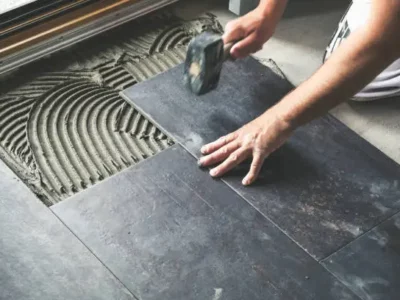Maintaining your roof is an important part of preserving your home. If you don’t take care of it, you could end up with some costly repair bills – or, worse still, you may need to replace it sooner than necessary. That’s why people get them professionally inspected and consider putting solid roofs on their conservatories. In this article, we’ll discuss 6 things to consider when maintaining your roof.
1. Let A Specialist Take A Look
A professional should check your roof at least once a year. They’ll be able to spot any potential problems early on and make sure that your roof’s in good condition. If you live in an area with extreme weather conditions, you may need to have your roof inspected more frequently. If you live somewhere with heavy snowfall, you should have your roof checked out after every major storm. This’ll ensure that there are no weak spots or damage that could cause problems later on.
A specialist can provide a written report that you can use for insurance purposes. They can also estimate how long your roof will last, and when it’ll need to be replaced. Make sure you thoroughly research local top performers because you’ll need proven professionals for this type of work. For example, if you need a certified roofing contractor in Vancouver, WA the internet can direct you to people who can help with roof inspections, repairs, and replacements. They can also assist with roof and gutter cleaning, attic insulation, and sidings.
2. Stay Safe
Whilst maintaining the roof yourself can save you money, it can also be a risky process. Working on your roof can be dangerous because there’s the potential for falling. You may also be working with power tools and chemicals. Wear the proper clothing and footwear, including closed-toed shoes, long pants, and a shirt that covers your arms. Inspect your ladder before using it, making sure it’s in good condition and that the legs are firm and locked into place. Never work alone, but instead have someone else holding the ladder and helping you out.
Here are some additional safety tips:
- Use caution when working with power tools and chemicals. Follow the instructions carefully and always wear protective gear such as gloves, goggles, and a respirator mask.
- Be aware of your surroundings. Watch for overhead power lines and be mindful of where you’re walking, to avoid trip hazards.
- Stop working if the weather conditions aren’t ideal. High winds, rain, and lightning can all pose a danger.
- Keep your work area clean and tidy to avoid accidents and injuries.
3. Check For Leaks
Water can cause a lot of damage to your home, and it only takes a small amount to do so. Check your ceilings for any water stains or drips, as this is probably where leaks will first appear. Take action and if necessary, call in a professional to take a look. Leaky roofs are often caused by missing, damaged, or loose shingles – or improper installation or flashing around chimneys, skylights, and vents. Flashing is the metal that seals the joints where your roof meets a wall or chimney, and it can also become corroded or displaced over time. Skylights are a common spot for leaks since they’re essentially holes in your roof.
If you have any of these issues, get them fixed as soon as possible or they’ll become worse and more expensive to repair. Make sure the areas are well-sealed to keep water out in the future. Not only will this prevent further damage to your home, but it’ll also save you money on your energy bill. Leaks let heat escape your home, which means your heater will have to work harder to keep things warm.
4. Check Your Gutters And Downspouts
Your gutters are designed to channel water away from your home, and your downspouts are the pipes that connect to the gutters and carry the water even further away. It’s important to keep these clean so they can do their job properly. Clogged gutters full of leaves and debris can cause water to back up and seep into your home, causing serious damage.
You should check your gutters at least once a year, and more often if you have trees near your house since they can drop leaves and branches there. If you see any signs of damage (such as cracks or leaks) repair them right away.
5. Keep Any Trees Trimmed Back
Overhanging branches can damage your roof by scratching or denting the shingles and allowing water and snow to seep in through the cracks. Debris such as leaves, twigs, and acorns can accumulate on your roof and clog up your gutters. Also, debris on your roof is a fire hazard, so it’s important to remove it regularly. Falling limbs (e.g. during extreme weather) can cause serious damage to your home – potentially injuring you or your family members.
Overhanging branches provide opportunities for pests like squirrels and raccoons to enter your home. To avoid all of these problems, trim back any trees that are close to your house. If you can’t do this yourself, hire a professional tree service. They’ll have the equipment and experience necessary to safely trim branches without damaging your roof.
6. Check Your Eaves, Gables, and Vents
Eaves are the edges of your roof that overhang the face of your home’s exterior walls. Gables are the triangular portion of the wall between the eaves at either end of your home. Vents are openings in your home’s roof that allow air to circulate.
All these areas can be potential problem areas when it comes to leaks and cracks. Pests can also enter your home through these areas, so keeping them sealed is important for both preventing water damage and pests.
If you apply these 6 tips you’ll be able to maintain your roof well. Not only will you be keeping the cold and weather out, but you’ll be protecting your house interior. In turn, this will boost the quality of life indoors, and help your home to retain its market value.





















